
© Nancy Rotenberg. All rights reserved.
Fill flash, set at – 1.5 stops, helped to freeze the motion of the snake’s flicking tongue. It also provided a highlight in the eye.
NATURAL LIGHT
What is ordinarily a mundane image can become magical in special lighting conditions. Time of day and weather are two important factors.
Time of Day
In early morning, light is uniform and soft, creating low-contrast conditions that cause the important details of texture and pattern to stand out.
In late afternoon, light is warm and colors appear more saturated. Even after the sun goes down, there is often more light than you realize.
Weather
People often assume that images will look better when photographed in bright sunlight. But in actuality, some photographs will be more successful if shot in overcast light. Although subjects may look beautiful to the eye in the glow of bright sunshine, on the light table they may appear contrasty, with burnt-out highlights and detail.
Overcast skies produce soft, low-contrast, diffused lighting that preserves details that might be washed out in full sunlight.
Rainy days can be quite magical, drizzling softness on flowers and leaves, and painting tree trunks with black wetness. Our rainy-day box consists of:
- rain boots, rain pants, and jacket
- golf umbrella
- towels
- Ziploc bags and trash bags
- camera and lens raincoats (shower caps are great)
Manipulating Natural Light
Diffusers: It would be wonderful if you could always be photographing in morning, evening, or overcast conditions. You can create the effect of overcast skies by using a diffuser. A diffuser is a panel of translucent material, positioned between the sun and your subject.
Reflectors: Reflectors are wonderful tools that redirect light onto your subject. Mirrors or crumpled aluminum on cardboard can be used, but the fold-up commercial reflectors work best, and fit neatly into a pack. Gold reflectors produce warm tones, enhancing earth tones such as red, oragne, and brown. Silver and white reflectors are more neutral and are useful as supplements to available light.
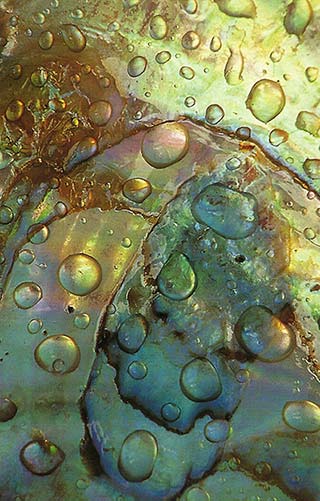
© Nancy Rotenberg. All rights reserved.
The soft side-lighting of early morning rays created a warm glow on this Abalone shell. Midday light would have blown all of the details out, and I probably wouldn’t have given the subject a second glance.
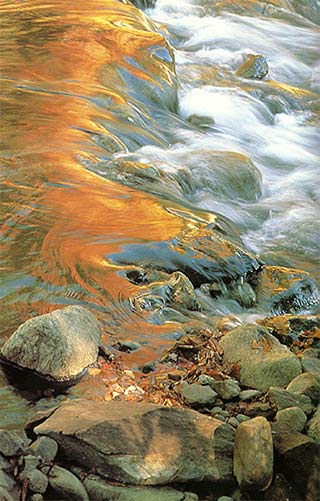
© Nancy Rotenberg. All rights reserved.
The warmth of late afternoon light adds a wonderful dimension to images. To emphasize the flow of water and color, I used a long exposure.
FLASH
As you move closer to increase magnification, you are faced not only with decreased depth of field, but also with an effective loss of light with the addition of any extension device. Achieving a life-size magnification requires two additional stops of light to maintain correct exposure. The camera and lens by themselves cannot satisfy the needs of a small f-stop and freezing motion. Although we prefer to use natural light at every opportunity, electronic flash can help with these problems.
Using a TTL (through-the-lens) flash unit is the best way to supply additional light when there is not enough light. The TTL flash unit reads the light reflected off the subject by using the camera’s sensor.
Set the camera exposure mode to manual or aperture priority.
Choose the type of metering pattern you’d like to use. Spot metering allows the greatest degree of control, but center and bottom-weighted averaging systems give good results as well.

© Nancy Rotenberg. All rights reserved.
If full power flash had been used to illuminate this backlit Banded Argiope, the effect of the backlighting would have been lost. The fill was set to -2, so that the shadowed argiope would be lit but the delicate web and dewdrops would not be burned out.
Set the aperture on your lens according to the depth-of-field desired.
Set the shutter speed for the correct available light exposure. This allows the flash to fill in with just enough light to finish off the correct exposure without burning out the highlights. On bright, sunny days, you can get ghost images if you use too slow a shutter speed.
Set the zoom control on the flash. This adjusts the angle of dispersion of the light-the wider the setting, the wider the light dispersion.
Set the f-stop on the flash unit to correspond to the aperture chosen for the lens. (Some units do this automatically.)
Set the exposure compensation on the flash to -1 to -1.7 or 1 2/3 stops for most subjects. This tells the flash not to fire at full power and determines the amount of fill light.

© Nancy Rotenberg. All rights reserved.
Both of these reflections were photographed only a few feet away from each other. Reflections have so many varieties of patterns and color combinations that just by moving your vantage point you can obtain a very different image.
ADDING INTEREST TO YOUR PHOTOS
As your vision sharpens, you will become more aware of shapes and patterns. Looking for the extraordinary in the ordinary is an exciting part of close-up photography. Ignore color and texture, and concentrate on the outlines of objects. If you have trouble doing this, a handy little filter, Zone VI from Calumet, eliminates color and shows just contrast and shape.
Reflections
As light disperses into abstraction, blues and greens dance in cascading waterfalls, and yellows and oranges weave tapestries in autumn ponds. Reflections create visual metaphors, where red rock canyon hues and cottonwood leaves echo their glow into rivers and streams.
Texture
Sometimes a photograph is not about the subject itself but rather about its physical properties, such as shape or texture. Things with wonderful textured surfaces, such as bark, leaves, shells, rocks, and flower petals, make excellent close-up subjects. The light that best reveals these textures is the low-angled light found in early mornings and late afternoons.
SPECIAL EFFECTS
Vignetting
When vignetting, an out-of-focus foreground is used to frame and isolate the subject. You shoot through one foreground object while focusing on another that is farther away. Whatever material you use as a frame must be as close as possible to the lens and outside of its focusing range.
It’s usually best to shoot through a color that is complementary to the subject and does not compete or clash, although you can occasionally achieve an exciting image by creating visual tension between colors.

© Nancy Rotenberg. All rights reserved.
Vignetting the bottom of the wintergreen’s rather bare stem softens its emergence into the frame.
Soft Focus
Soft focus can add a hint of mystery or romance to your close-up images. Soft-focus filters are simply screwed onto the front of the lens. You can purchase one or make one yourself from an inexpensive skylight filter covered with Vaseline or mesh, such as a piece of nylon stocking.
It’s easy to overdo special techniques – be subtle. As is often the case, the most effective techniques are those which are “transparent” and do not attract attention to themselves.
ESTHETICS
You may have all kinds of wonderful camera equipment, and you may have learned all the proper techniques, but when you look at your images on the light table, you still may be disappointed. Just as the development of your technical skills did not happen overnight, the development of your photographic vision also takes practice, patience, and perseverance.
Eliot Porter, master of detail in the natural world, said that a true work of art is “the creation of love; love for the subject first and for the medium second”.
A child’s brain thinks in terms of magic and mystery, not mastery and manipulation. To obtain successful images, we have to get in touch with that child inside, and leave known territory for the discovery of new lands.
Spending focused hours in one small area, you can learn about a blade of grass, a crab spider, patterns in the earth, and about the tiny hairs on a flower’s stem. It is only by spending time with a subject can you hope to move from documentation to interpretation.
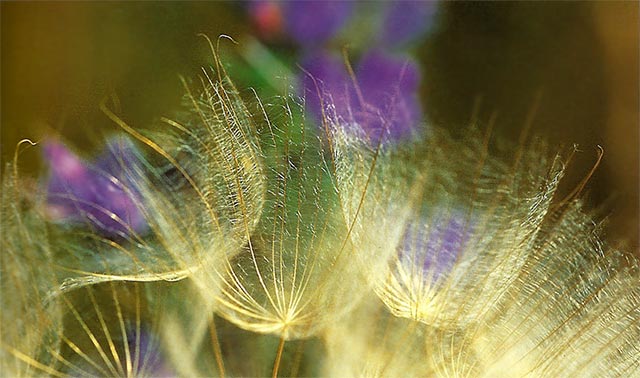
© Nancy Rotenberg. All Rights Reserved.
Instead of being frustrated by the wind, I chose a long exposure to portray the movement and rhythm of wind.
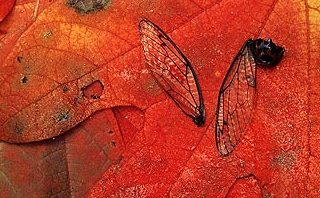
© Nancy Rotenberg. All Rights Reserved.
Using symbols in your photographs is an effective method of telling a story. Viewers are encouraged to think about the events that took place and thus become involved in the story.
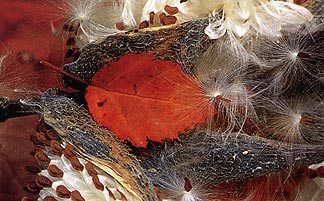
© Nancy Rotenberg. All Rights Reserved.
Hillsides of sweeping hues, grand landscapes of oranges and reds, and lakes surrounded by kaleidoscopes of color make it easy to be caught up in the grandeur of it all. Small details can quietly represent an entire season, and often provide a more intimate view.
Inhale the nature around you and take nourishment from “the tonic of wildness”. This is a holistic process, through which everything is understood to affect everything else.
by Nancy Rotenberg & Michael Lustbader
Updated in honor of Nancy Rotenberg.
All tips are excerpted from the book “How to Photograph Close-ups in Nature”.
Article and photos: © Nancy Rotenberg & Michael Lustbader. All rights reserved.

Leave a Reply